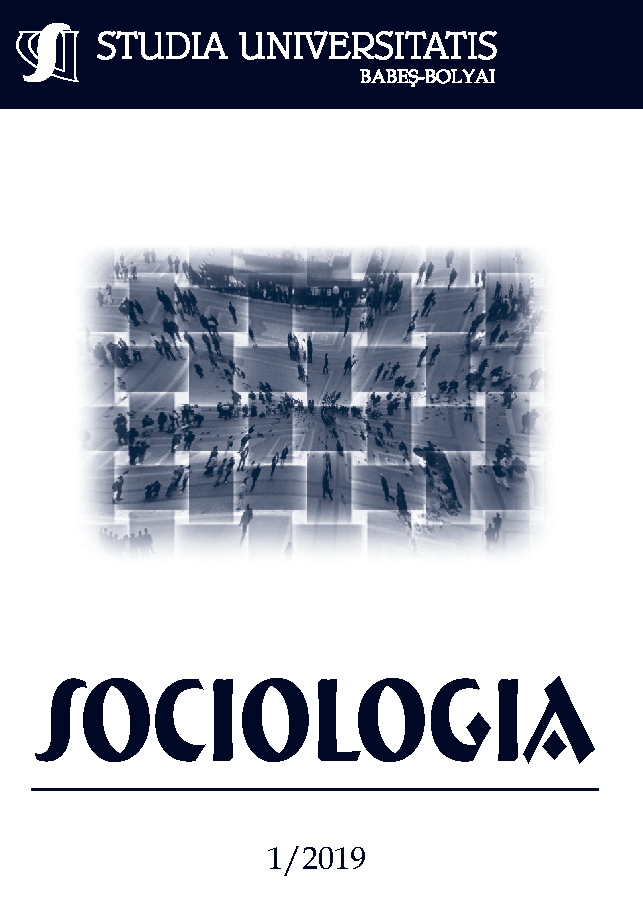SUBURBANISATION AND MIDDLE CLASS IMAGINAIRES IN THE POST-SOCIALIST CITY. A ROMANIAN CASE STUDY
DOI:
https://doi.org/10.2478/subbs-2019-0004Keywords:
middle class, post-socialist city, Cluj-Napoca, critical anthropology.Abstract
The article is a contribution to the debates on the topics of class divide and urban development in the ex-Socialist Bloc after the 1990 regime change. In the first part, it renders the roots and limitations of the middle class concept and shows the role the concept played in the transition narrative. After it elaborates on how the middle class can be understood within the broader discussion on contemporary global class restructuring under the neoliberal forces, in the second part the article provides, using qualitative data, a micro social and economic history of the city of Cluj-Napoca, which reveals and explains how flows of capital investments grant the economic conditions for a strata of people to embrace the middle class's ideal and values, and how this new material basis is reflected in the spatial restructuring of the city.References
*** (2016). Sociological and Anthropological Perspectives on Religion and Economy: Emerging Spiritualities and the Future of Work, Studia UBB Sociologia, 61 (2), Special Issue: 5-164.
Arrighi, Giovanni (2010). The Long Twentieth Century. London: Verso.
Baldassare, M. (1992). Suburban Communities. Annual Review of Sociology, 18: 475-494.
Bell, Daniel (1973). The Coming of Post-Industrial Society. Basic Books.
Boltanski, Luc and Eve Chiapello (2005). The New Spirit of Capitalism. London: Verso.
Brubaker, Rogers; Margit Feischmidt; John Fox; Liana Grancea (2006). Nationalist Politics and Everyday Ethnicity in a Transylvanian Town. Princeton: Princeton University Press.
Brincoveanu, Romulus (2005). Romania from the end of discourse. Sfera Politicii, 114: 2-5.
Buden, Boris (2009). Zone des Übergangs. Vom Ende des Postkommunismus. Suhrkamp Verlag.
Buchowski, Michał (2001). Rethinking Transformation of Anthropological Perspective on Post-Socialism. Wydawnictwo Humaniora.
Coraian Zoltan (2016). Planul de mobilitate urbană durabilă, Cluj-Napoca, http://ec.europa.eu/regional_policy/sources/conferences/udn_bucharest_2016/pres_zoltan.pdf (last accessed 29.01.2017).
Eyal Gil, Szelenyi Ivan, and Townsley Eleanor (2001). Making Capitalism without Capitalists: The New Ruling Elites in Eastern Europe. New York: Verso Books.
Fehérváry, Kisztina (2002). American Kitchens, Luxury Bathrooms, and the Search for a ‘Normal’ Life in Postsocialist Hungary. Ethnos, 67 (3): 369–400.
Gog, Sorin (2016). Alternative Forms of Spirituality and the Socialization of a Self-Enhancing Subjectivity: Features of the Post-Secular Religious Space in Contemporary Romania. In Sorin Gog and Anca Simionca (Eds.). Sociological and Anthropological Perspectives on Religion and Economy: Emerging Spiritualities and the Future of Work, Studia UBB Sociologia, 61 (2), Special Issue: 5-164.
Gustafson, Thane (1999). Capitalism Russian-Style. Cambridge University Press.
Hobsbawm, Eric (1987). The Age of Empire (1875-1914). New York: Vintage Books.
Humphrey, Caroline (1991). Icebergs, Barter, and the Mafia in Provincial Russia, Anthropology Today, 7 (2): 8-13.
Ionescu-Heroiu et al (2013). Growth Poles. The Next Phase, https://www.researchgate.net/publication/303153972_Growth_Poles_The_Next_Phase (last accessed 27.01.2017).
Judt, Tony (2005). Postwar: A History of Europe Since 1945. William Heinemann.
Kalb, Don; James G. Carrier (2015). Anthropologies of Class. Cambridge University Press.
Karnoouh, C.; Drweski, B. (eds.) (2005). La grande braderie à l'Est. Le Temps de Cerises.
Low, Setha (2003). Behind the Gates. Life, Security and the Pursuit of Happiness in Fortress America. New York: Routlege.
Le Corbusier (1986 [1923]). Towards a New Architecture. New York: Dover.
Lopez, A. Ricardo; Weinstein, B. (eds.) (2012). The Making of the Middle Class. Toward a Transnational History. Duke University Press.
Mills, C Wright (1951). White Collar: The American Middle Classes. New York: Oxford University Press.
Nazpari, Joma (2002). Post-Soviet Chaos. Violence and Dispossession in Kazakhstan. London: Pluto Press.
Patico, Jennifer (2008). Consumption and Social Change in a Post-Soviet Middle Class. Stanford: Stanford University Press.
Petrovici, Norbert (2012). Workers and the City: Rethinking the Geographies of Power in Post-Socialist Urbanisation. Urban Studies, 49 (11): 2377-2397.
Polanska, D (2010). The Emergences of Gated Communities in Post-Communist Urban Context: and the reasons for their increasing popularity. Journal of Housing and the Built Environment, 25 (3): 295-312.
Stanilov, Kiril (ed.) (2007). The Post-Socialist City. Springer.
Troc, Gabriel (2013). Locuire și sociabilitate în cartierul postsocialist. Revista de antropologie urbană, 1 (1): 29-48.
Verdery, Katherine (1996). What Was Socialism and What Comes Next? Princeton: Princeton University Press.
Downloads
Published
How to Cite
Issue
Section
License
Copyright (c) 2019 Studia Universitatis Babeș-Bolyai Sociologia

This work is licensed under a Creative Commons Attribution-NonCommercial-NoDerivatives 4.0 International License.



